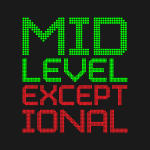Could New TV Deal Lead to Abolition of Max Contracts?
The NBA’s new nine-year, $24 million media deal announced Monday will have wide-reaching implications for years to come. The salary cap is set to explode, setting the stage for wild offseasons over the next few summers, and contracts that appear bloated today could be steals in a few years’ time.
Amidst the chaos, ESPN.com’s Brian Windhorst tweeted some news Monday morning that should have NBA owners on high alert:
According to ESPN.com’s Dave McMenamin, James “would not comment on his stance on the subject” when speaking with reporters Monday, saying, “I don’t even really get into speculation conversations in my name. I haven’t even began to think about as far as how I’m going to go forward with what I’m doing.”
Even if both sides agree to stay locked into the current collective bargaining agreement through the 2020-21 season, max salaries will still skyrocket over the coming years. Unlike rookie-scale deals or cap exceptions—which we’ll touch upon at MLE in the coming days—maximum salaries are tied to the size of the salary cap. (According to Larry Coon’s CBA FAQ, the cap calculation used to determine maximum salaries is based on 42.14 percent of projected basketball related income.) Players with 0-6 years of service in the league can sign a deal up to 25 percent of the cap—roughly $14.75 million in 2014-15, using that 42.14 percent calculation—while those with 7-9 years and 10-plus years can go up to 30 percent and 35 percent of the cap, respectively.
Maximum salaries for players with 10 or more years in the league are limited to beginning at roughly $20.65 million in 2014-15. According to some back-of-the-napkin math from CBSSports.com’s Ken Berger, max salaries for those players could skyrocket to start at $28.2 million in 2016-17—more than a 36 percent increase in two years’ time.
If players aren’t satisfied with that jump, there’s not much they can do about it right away. To change or eliminate max contracts, either the players or team owners must opt out of the CBA following the 2016-17 season. Based on the rumblings throughout the league—CBSSports.com’s Matt Moore collected a sample here—that’s basically a foregone conclusion.
From there, the sky’s the limit in terms of possible reforms. The NBA and the players’ union could do what Danny Leroux and I advocated earlier this summer—raising the threshold on max contracts to somewhere in the ballpark of 40-50 percent of the cap—or eliminate them altogether. However, wiping out max contracts completely could have major ramifications elsewhere, which could give the players’ union pause before agreeing to such a massive change.
As Jared Dubin noted in our max-contract roundtable: “While the issue would be framed as ‘more money for everyone!’, the reality is closer to ‘more money for guys like LeBron, and way less money for almost everyone.’ LeBron (and players like him) being ‘underpaid’ by $15-25 million per year relative to their market value is what allows for contracts like Udonis Haslem at five years, $20 million.” As much as the NBPA must protect the interests of superstars like LeBron and Kevin Durant, the rank-and-file middle-class players constitute a much larger share of the union. You think they’re readily willing to sacrifice millions in salary so the already-uber-rich get richer?
Wiping out max contracts entirely will also make what the Cleveland Cavaliers constructed this summer nearly impossible to replicate moving forward. And while small-market teams with little chance of attracting multiple superstars might not mind the prevention of superteams, it’s hard to argue that such squads don’t draw more eyeballs to the league.
As if the summer of 2016 wasn’t already shaping up to be legendary, the potential of dramatic changes to max contracts will only up the ante. Will teams be less reluctant to hand out max deals that summer to less-than-max-caliber players in fear of an increased (or eliminated) max salary? Fans of NBA chaos will certainly hope so.


